A heat-resistant dash cam is essential for summer because extreme temperatures inside a parked car can cause standard models to malfunction, shut down, or suffer permanent damage. Devices powered by supercapacitors instead of lithium-ion batteries are far more resilient, as they can withstand higher temperatures without the risk of swelling, leaking, or degrading, ensuring your dash cam reliably records crucial footage even on the hottest days.
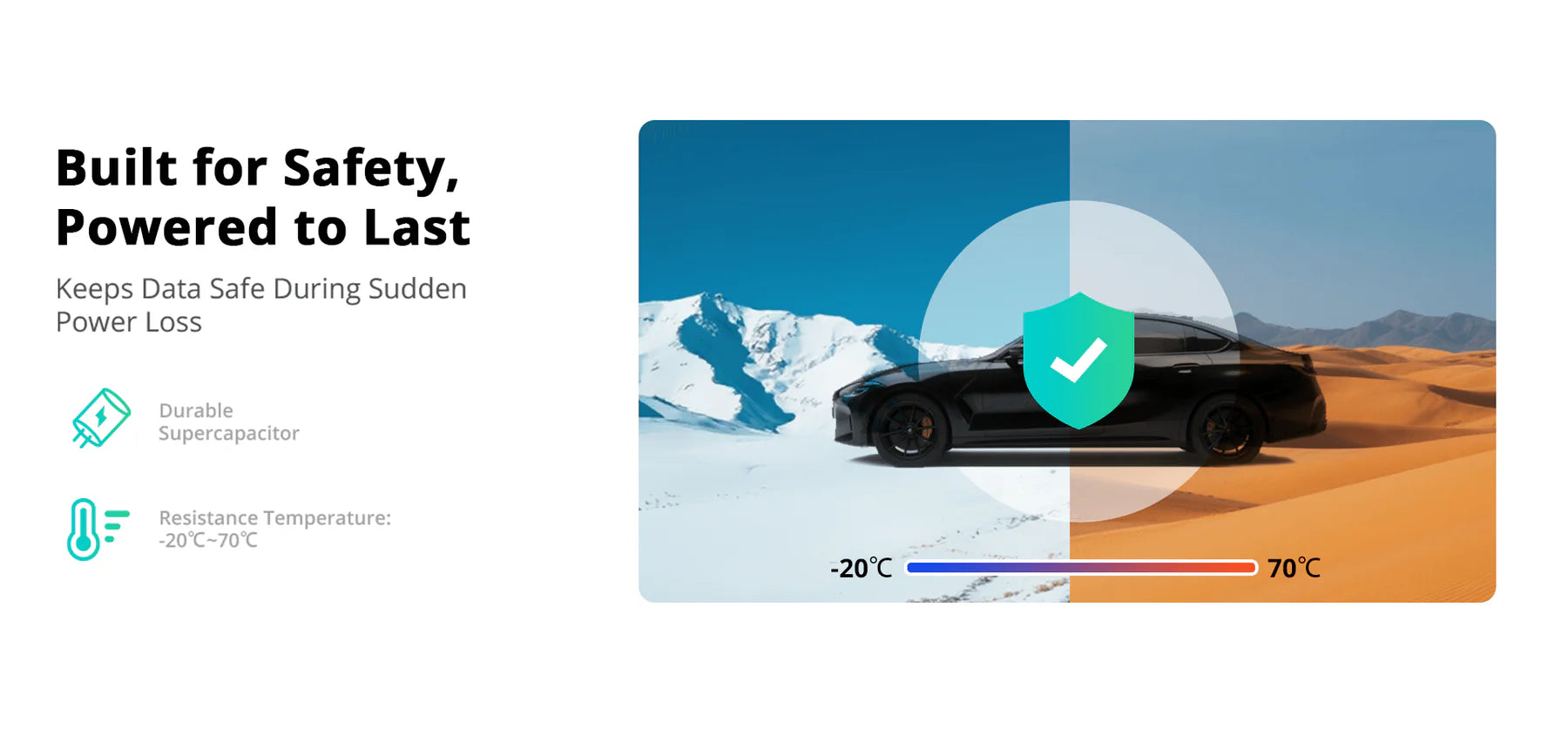
Table of Contents
- Why is Summer Heat a Threat to Your Dash Cam?
- What Happens When a Dash Cam Overheats?
- Which is Better for Hot Climates: Capacitor or Battery?
- How Do You Identify a Heat-Resistant Dash Cam?
- What is the Ideal Operating Temperature Range?
- Does Parking Mode Work in Extreme Heat?
- How Does Mounting Affect a Dash Cam in the Sun?
- Can the Design and Color Make a Difference?
- Are 4K Dash Cams More Prone to Overheating?
- What are the Best Practices for Protecting Your Dash Cam?
Why is Summer Heat a Threat to Your Dash Cam?
As summer temperatures climb, the interior of a parked car can become a veritable oven. On a 35°C (95°F) day, the inside of a vehicle can soar to over 60°C (140°F) in less than an hour. This intense, prolonged heat exposure poses a significant threat to electronic devices, especially those mounted directly on the windshield, like a dash cam. The windshield acts as a magnifying glass, concentrating the sun's rays and creating a micro-environment that is even hotter than the rest of the cabin.
This extreme environment pushes a dash cam far beyond its intended operating conditions. Internal components, including the processor, image sensor, and memory card, are all susceptible to heat-related stress. The most vulnerable component, however, is often the power source. This is why understanding the build and specifications of your device is not just a technicality—it is crucial for ensuring its longevity and reliability when you need it most.
What Happens When a Dash Cam Overheats?
An overheating dash cam can exhibit a range of problems, from temporary glitches to catastrophic failure. Recognizing these signs is key to preventing permanent damage. Initially, you might notice performance degradation such as frozen screens, random reboots, or corrupted video files. The device might stop recording intermittently without any warning, leaving critical gaps in your driving record.
If the heat exposure continues, more severe issues can arise. For models with lithium-ion batteries, the battery may begin to swell, physically deforming the dash cam's casing. In the worst-case scenario, the battery could leak corrosive acid or even pose a fire risk. Other internal components can also fail, leading to blurry images from a damaged lens or a complete shutdown of the device. Many dash cams have a thermal protection circuit that automatically powers them down when a certain temperature is reached, but frequent shutdowns can still cause long-term wear and tear.
Which is Better for Hot Climates: Capacitor or Battery?
The single most important factor in a dash cam's heat resistance is its internal power source. The choice between a supercapacitor and a traditional lithium-ion (Li-ion) battery directly impacts its performance and safety in hot weather. For anyone living in or traveling through warm climates, a supercapacitor-based dash cam is the superior choice.
Supercapacitors are designed to handle extreme temperature fluctuations. They store energy electrostatically and do not rely on a chemical reaction like batteries do. This makes them inherently more stable and durable in high-heat environments. While they hold much less charge than a battery—typically just enough to safely save the last video file after your car turns off—their primary advantage is heat tolerance. In contrast, Li-ion batteries degrade rapidly when exposed to heat, lose their ability to hold a charge, and carry a risk of swelling and failure.
| Feature | Supercapacitor Dash Cam | Lithium-ion Battery Dash Cam |
|---|---|---|
| Heat Tolerance | Excellent. Typically rated for -20°C to 70°C (-4°F to 158°F) or higher. | Poor. Prone to swelling, leaking, and rapid degradation above 45°C (113°F). |
| Lifespan | Very long. Can handle hundreds of thousands of charge/discharge cycles. | Limited. Lifespan is significantly shortened by heat exposure. |
| Safety | High. No risk of chemical leakage or fire from overheating. | Lower. Can swell and become a fire hazard in extreme heat. |
| Parking Mode Power | Requires a hardwire kit for power when the car is off. | Can run for a short time on its internal battery (if heat allows). |
How Do You Identify a Heat-Resistant Dash Cam?
Identifying a dash cam that can withstand summer heat involves checking a few key specifications on the product page or packaging. Being an informed buyer is the best way to ensure your investment is protected from the sun.
Check the Power Source
First and foremost, look for the term "supercapacitor" or "capacitor" in the product's technical specifications. Manufacturers of heat-resistant models proudly advertise this feature. If the specifications list a "built-in Li-ion battery" or mention a specific battery capacity (e.g., 300mAh), it is likely not the ideal choice for a hot climate, especially if you plan to use parking mode or leave it in the car year-round.
Verify Operating and Storage Temperature Ratings
Every reputable dash cam manufacturer will provide two critical temperature ratings: operating and storage. The operating temperature is the range in which the device can actively record video. The storage temperature is the range it can safely withstand while powered off. For summer use, the operating temperature is particularly important. A higher maximum temperature indicates a more robust and reliable device.
What is the Ideal Operating Temperature Range?
For a dash cam to be truly effective in summer, its maximum operating temperature should be at least 65°C (149°F). High-quality, heat-resistant models will often push this even further. For instance, premium devices like the Botslab dash cam series are engineered to function flawlessly in temperatures up to 70°C (158°F). This specification provides a crucial buffer, ensuring the camera keeps recording even when the car's interior reaches extreme levels.
The storage temperature should be even higher, often up to 80°C (176°F) or more. This ensures that even when the camera is off and baking in the sun, its internal components will not be permanently damaged. Always prioritize models that are transparent about these ratings, as it reflects the manufacturer's confidence in their product's durability.
Does Parking Mode Work in Extreme Heat?
Parking mode is a vital security feature that records incidents while your car is unattended. However, its reliability in summer is directly tied to the dash cam's heat tolerance. A device with a low thermal threshold will likely shut itself down to prevent damage, rendering parking mode useless precisely when your vehicle might be parked in a sun-drenched, vulnerable location for hours.
Capacitor-based dash cams with a high operating temperature rating are essential for dependable parking surveillance in the heat. Because they are powered by the car's battery via a hardwire kit, they can remain on standby. Their built-in temperature sensors will still shut the unit down if it exceeds its maximum safe temperature, but that threshold will be much higher than on a battery-powered model, providing a much wider window of protection.
How Does Mounting Affect a Dash Cam in the Sun?
The way you mount your dash cam can also influence its ability to cope with heat. The two most common mounting types are suction cups and adhesive pads. While suction cups offer flexibility, they are notoriously unreliable in extreme heat. The sun's rays can dry out the plastic, causing it to lose its seal and fall off the windshield, potentially damaging the device.
Adhesive mounts, particularly those using high-quality 3M VHB (Very High Bond) tape, are far more secure in hot weather. They form a strong, semi-permanent bond with the glass that is not affected by temperature swings. For maximum stability and heat resistance, always opt for a dash cam that includes an adhesive mount.
Can the Design and Color Make a Difference?
Yes, the physical design of a dash cam can play a role in heat dissipation. Models with a discreet, compact form factor often have less surface area to absorb direct sunlight. Furthermore, devices with matte black or dark grey finishes are common, but they also absorb more heat. While color choices are limited, look for designs that incorporate ventilation holes or a chassis made of materials that help dissipate heat effectively.
A wedge or mini-turret shape that fits snugly against the windshield, often tucked behind the rearview mirror, is ideal. This placement not only makes the camera less noticeable but can also partially shield it from the most direct and intense sunlight, helping to keep its internal temperature down.
Are 4K Dash Cams More Prone to Overheating?
Recording in 4K resolution requires more processing power than recording in 1080p or 2K. This increased workload generates more internal heat from the processor and image sensor. Consequently, a poorly designed 4K dash cam can be more susceptible to overheating than its lower-resolution counterparts.
However, this does not mean you must sacrifice video quality. Top-tier 4K dash cams are engineered with this challenge in mind. They use more efficient processors, better thermal management systems (like internal heatsinks), and well-ventilated casings to manage the extra heat. When choosing a 4K model for summer use, it is even more critical to select one with a supercapacitor and a high operating temperature rating to ensure it can handle both the environmental heat and its own operational heat without issue.
What are the Best Practices for Protecting Your Dash Cam?
Even with a heat-resistant model, a few simple habits can extend your dash cam's life and ensure its optimal performance during the hottest months.
- Use a Sunshade: Placing a reflective sunshade on your windshield when parked is the most effective way to lower your car's interior temperature and protect the dash cam from direct UV exposure.
- Park Smart: Whenever possible, park in a shaded area or a garage to minimize direct sun exposure on your vehicle.
- Mount Strategically: Position the dash cam behind the rearview mirror, ideally within the tinted "frit" band at the top of the windshield, to provide some extra shade.
- Enable High-Temperature Cutoff: Check your dash cam's settings for a high-temperature protection feature. This will automatically shut down the device if it reaches a critical internal temperature, preventing permanent damage.
By choosing a device built for the heat and following these protective measures, you can ensure your dash cam remains a reliable witness on the road, no matter how high the mercury rises.



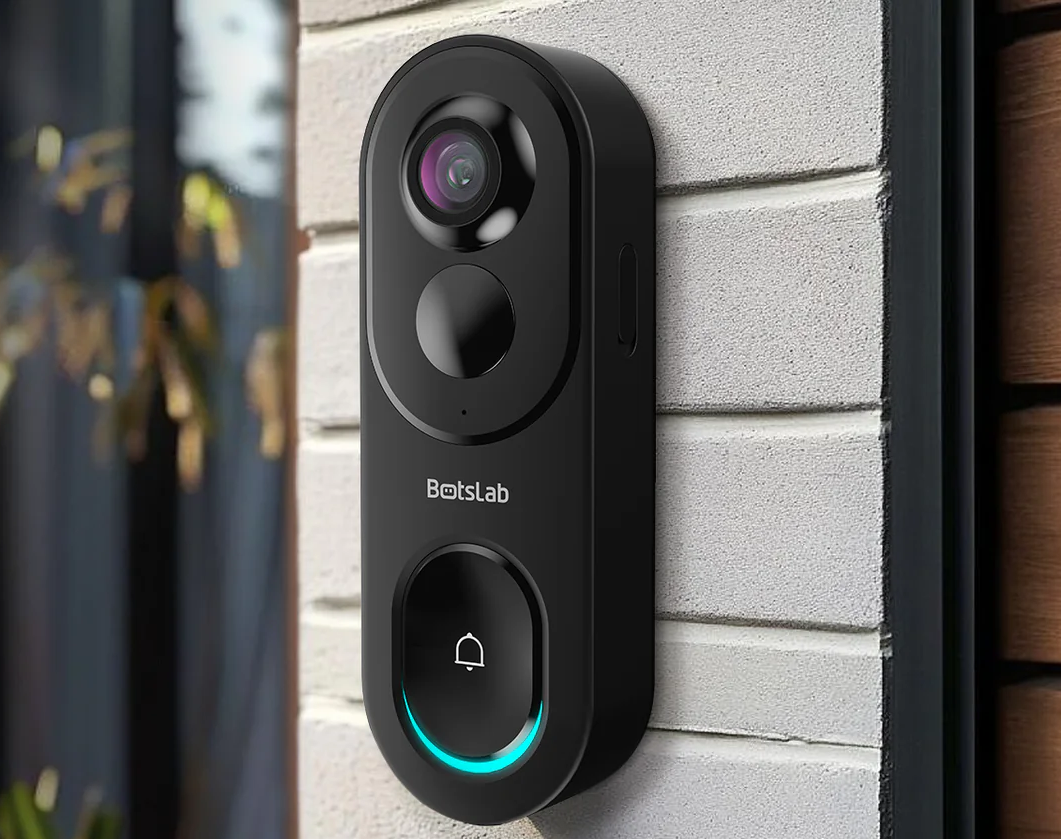
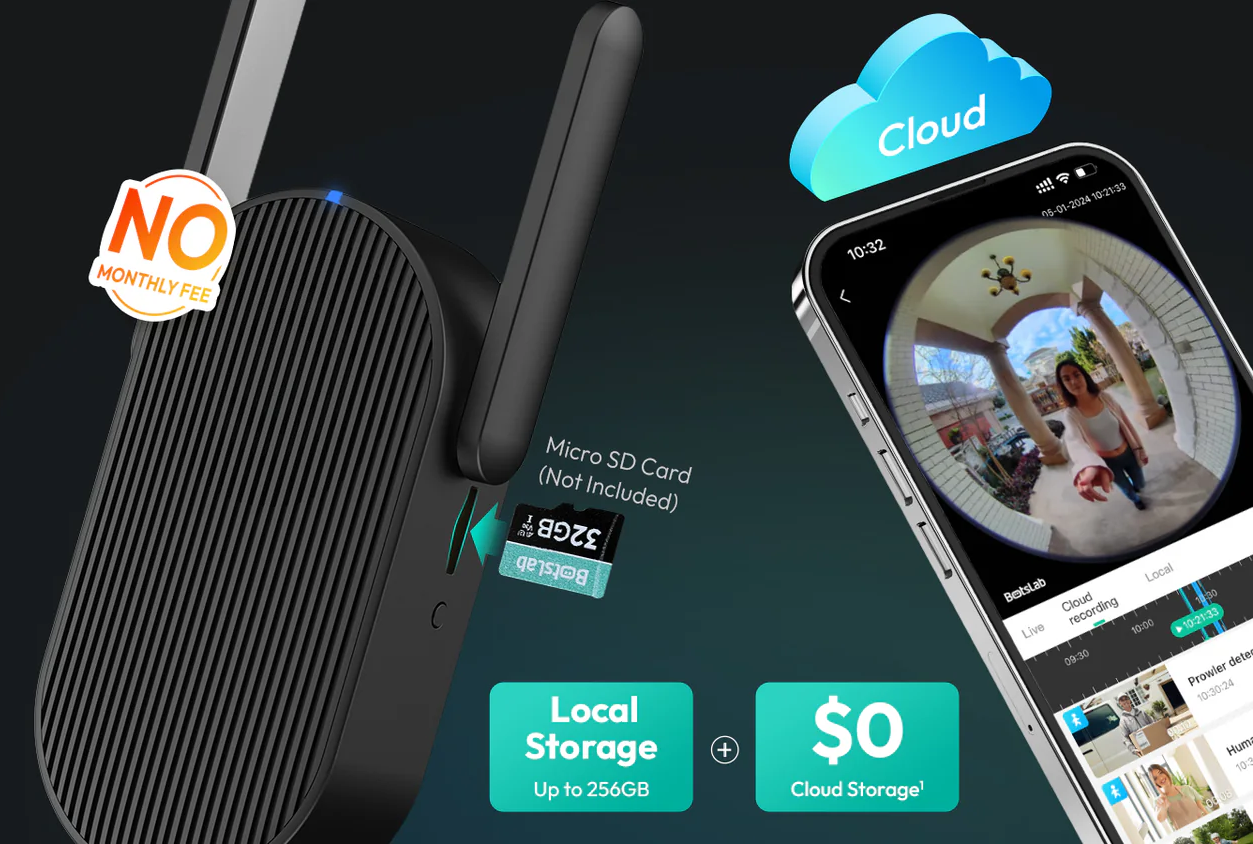



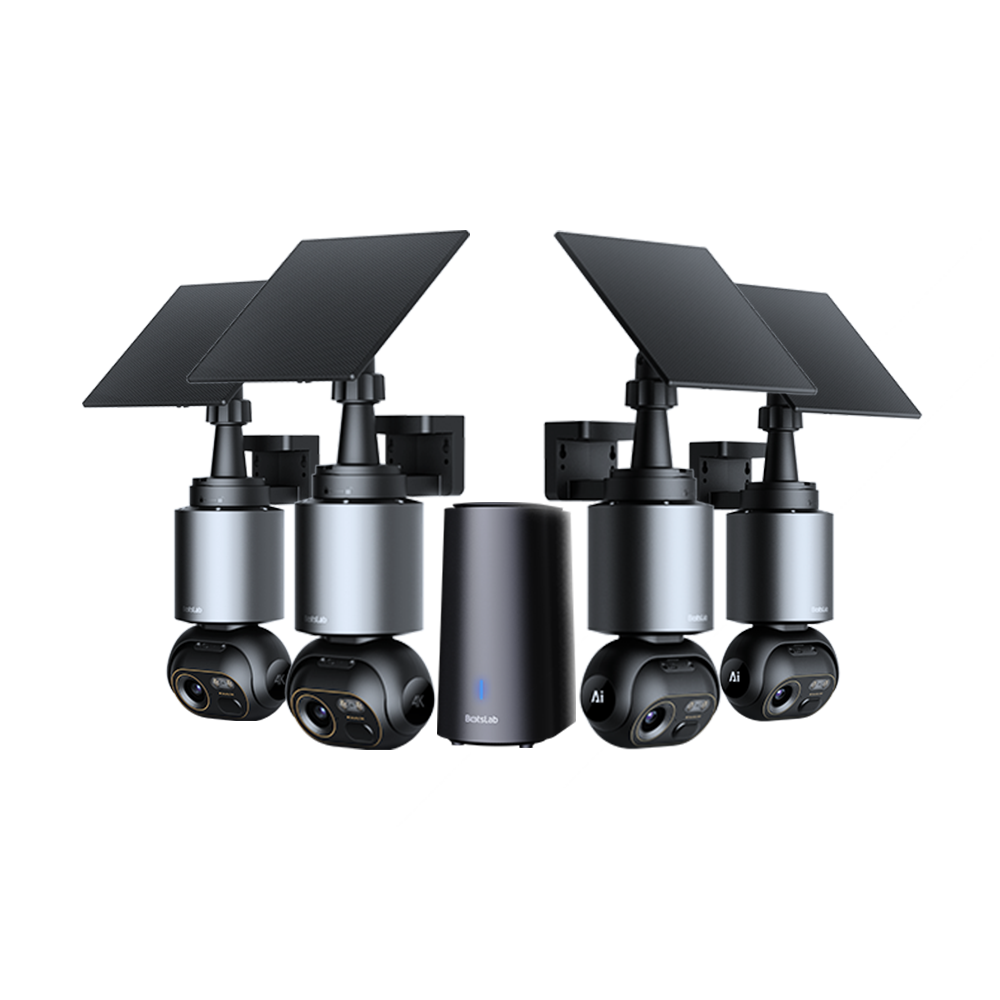




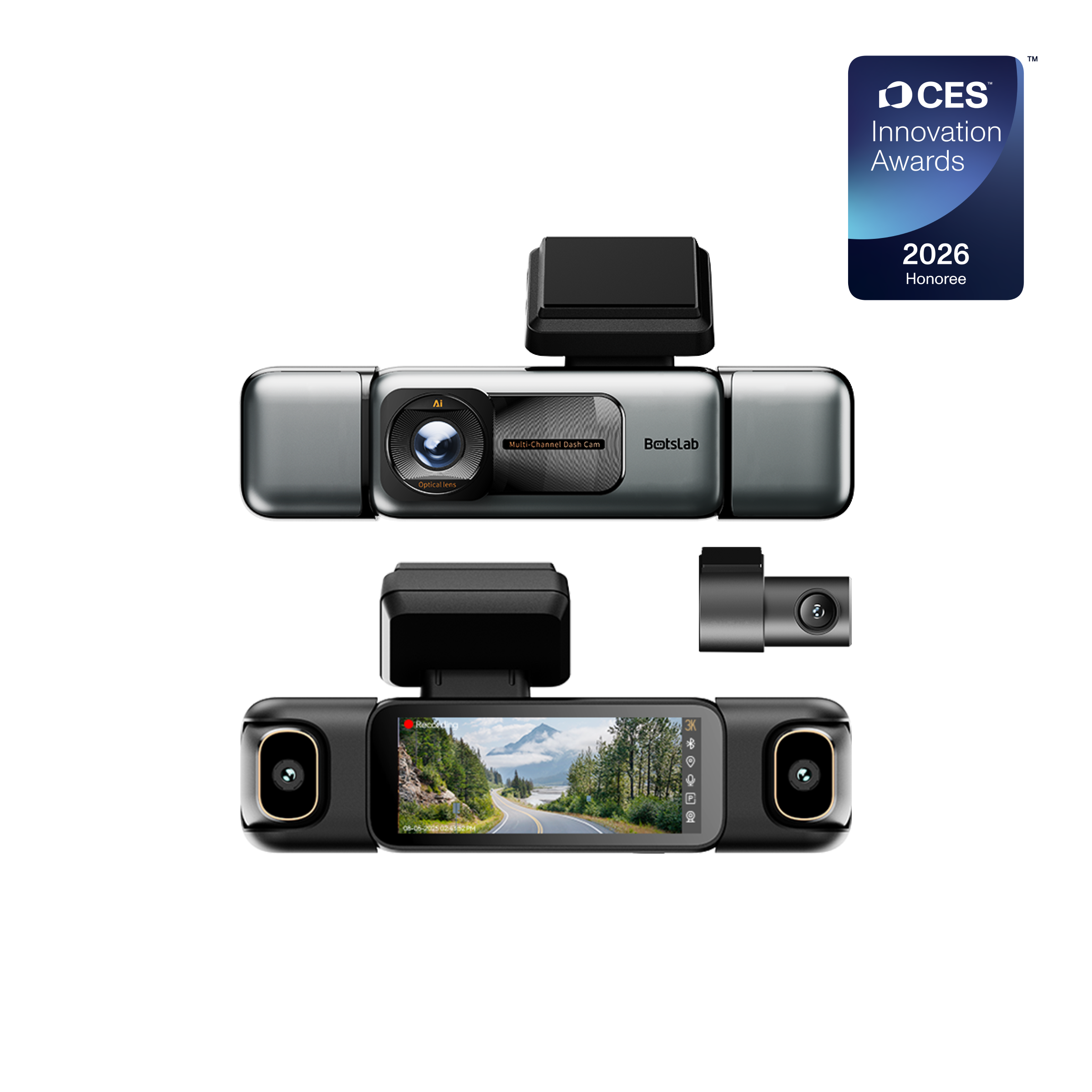
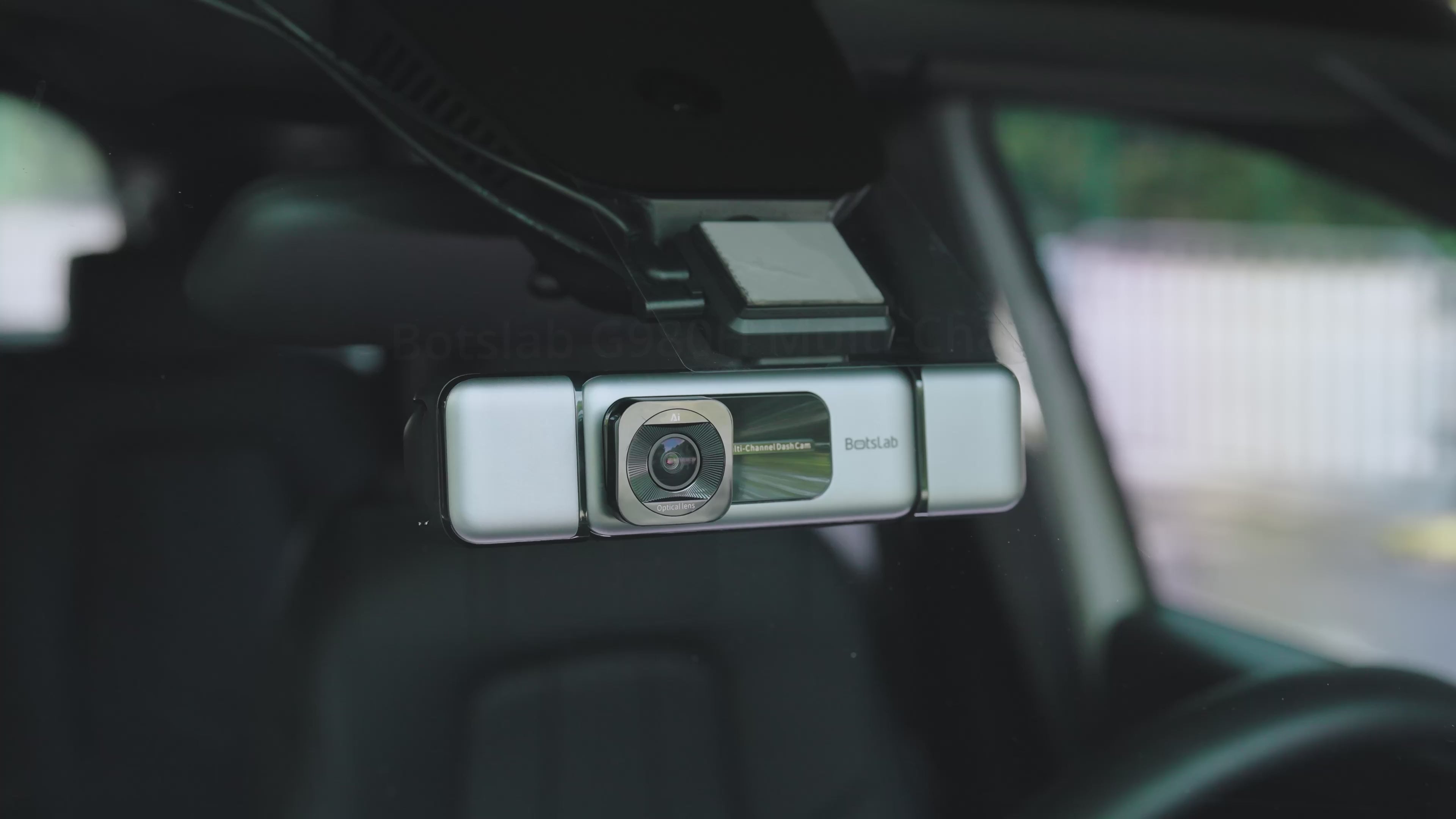





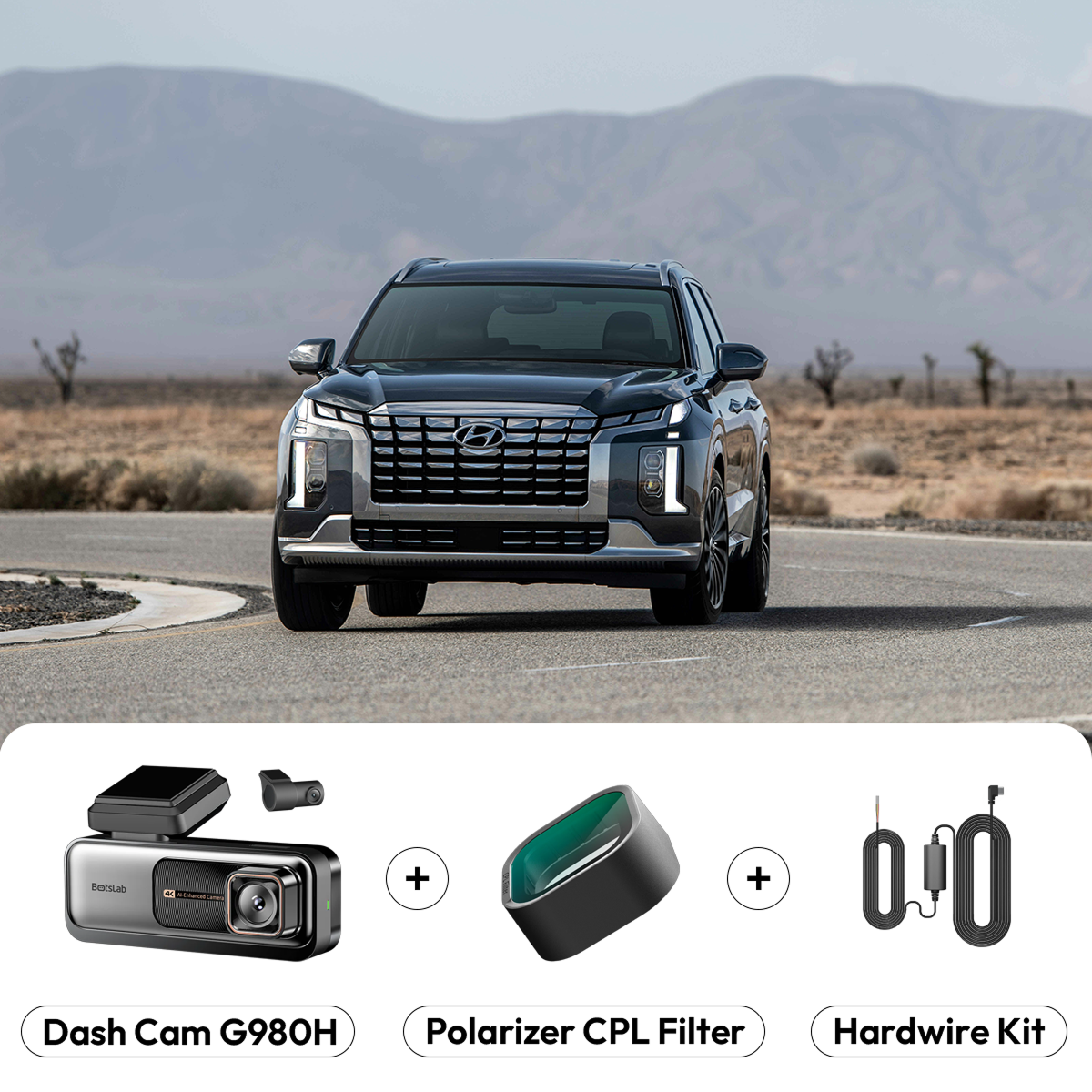


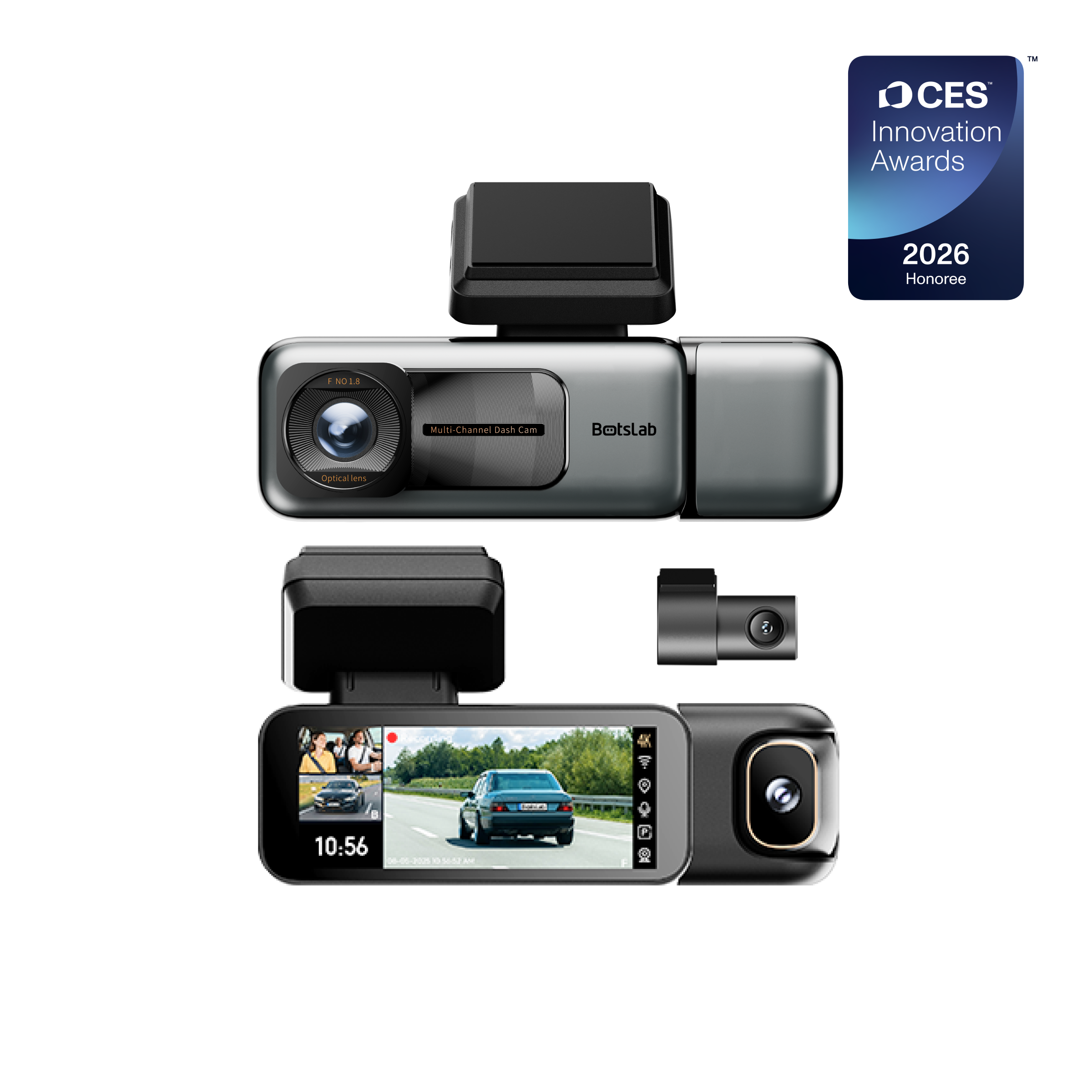





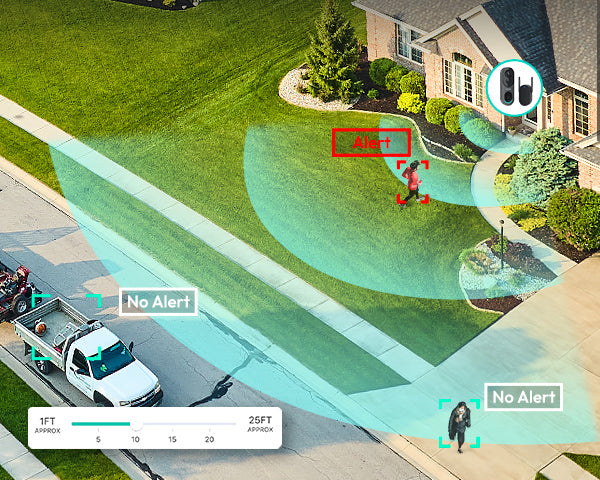




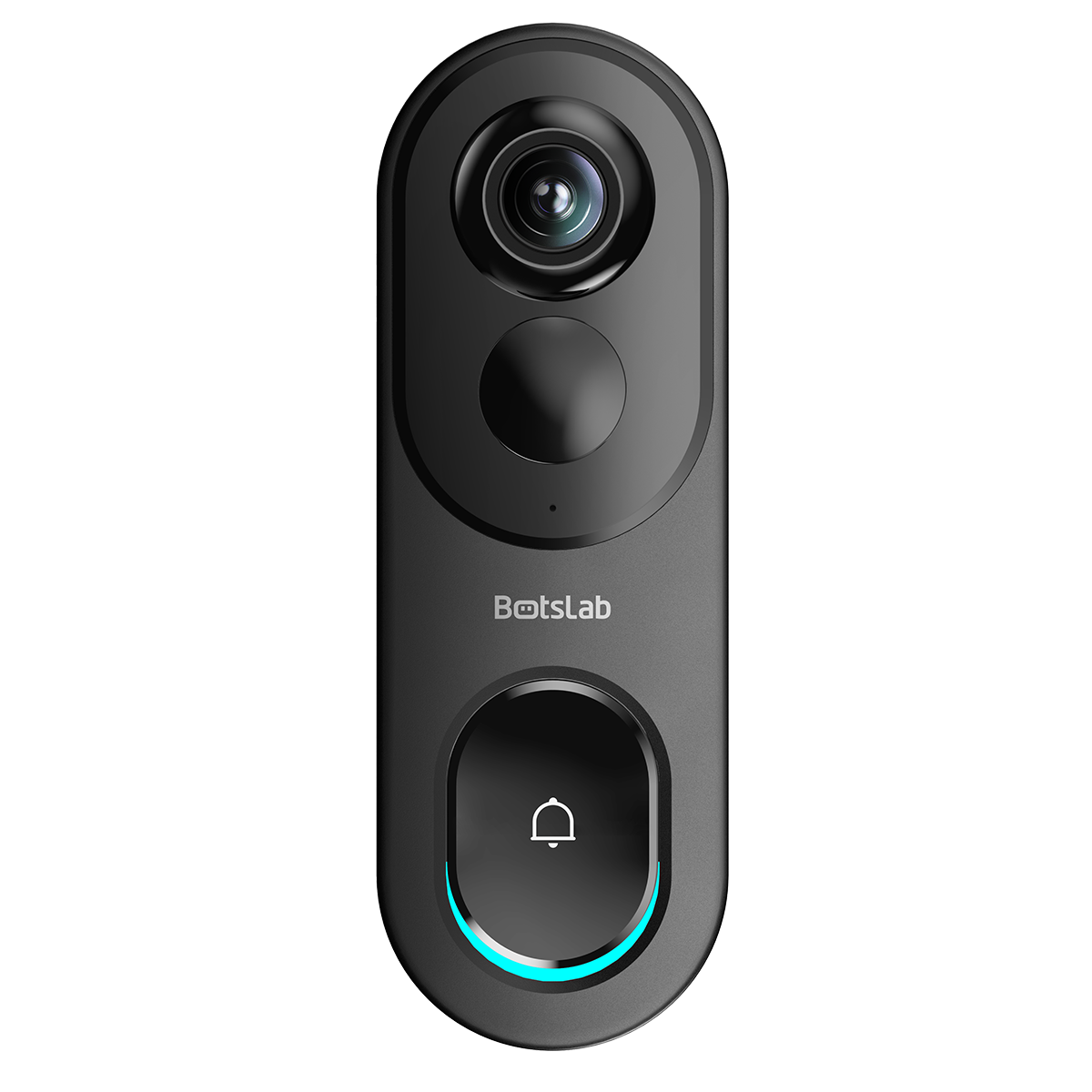

Share:
How to install Google Home integration for video doorbells?
How exactly does two-way audio technology in security surveillance cameras work?